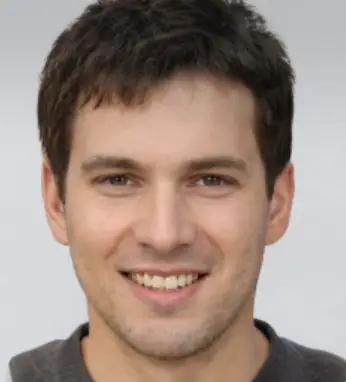A Timeline of Events in the Life of James Bond
Discover the exciting journey of the world’s favorite spy with our comprehensive James Bond Timeline. From the dashing and suave Sean Connery era to most recent Daniel Craig’s more nuanced portrayal, we chart the evolution of this iconic character, detailing major plot points and significant transformations across decades. Dive in to follow Bond’s exploits through time.
In 1962, Eon Productions kick-started an iconic series with Dr. No, an interpretation of Ian Fleming’s popular James Bond novels. The flick introduced a charming, lethal, and sharp-witted super spy who battles a mad nuclear scientist in the Caribbean, struck gold. It sired one of the most enduring and successful franchises in media history.
Fast forward six decades, and James Bond is still swinging. Six distinct actors have brought the legendary Agent 007 to life in 25 films in Eon’s series. Throughout that time, James Bond has shown resilience, both in the narratives of his cinematic escapades and in the volatile world of pop culture.
So, let’s relish a retrospective of Bond’s epic adventures in the venerable Eon Productions series. Here is the James Bond timeline in order, laid bare.
A James Bond Timeline
The Beginnings
Many James Bond adaptations barely touch upon his early life, but Ian Fleming, the creator, did detail a backstory for his legendary secret agent, most of which has remained consistent over the decades since 007’s debut.
Bond was the offspring of a Scottish father and a Swiss mother and spent his early years in various European locales due to his father’s work. A mountain climbing mishap claimed his parents when he was 11, leading to his aunt taking him in.

After graduating early from Eton and then Fettes in Scotland, Bond manipulated his age to enter the Ministry of Defence in 1941. He joined the Special Branch of the Royal Navy Volunteer Reserve, performing confidential tasks as a lieutenant.
By the time World War II ended, he had earned the rank of Commander. His post-war covert work for the Ministry led to him attaining the rank of Principal Officer of the Civil Service. A pair of assassinations further bolstered his career, granting him the famed “00” status and with it a licence to kill.
As is usual with any long-standing franchise, the James Bond timeline has been modified across different adaptations. Regardless, Bond’s naval service and his covert work for the Ministry of Defence, along with his tragic childhood, have remained constant elements in his backstory.
His Biggest Foe – SPECTRE
Bond 1, Dr. No, the inaugural film in the Eon Productions Bond series, had Bond venturing to Jamaica to probe into the death of the local MI6 station chief. Bond’s investigation, punctuated by several attempts on his life, led him to Crab Key, a radioactive zone guarded by a flamethrower-equipped “dragon,” which was, in reality, a tank.
Bond and his new companion Honey Ryder stumbled upon the den of Dr. Julius No, a brilliant scientist and a SPECTRE (Special Executive for Counter-Intelligence, Terrorism, Revenge, and Extortion) recruit. Dr. No’s masterplan involved the disruption of the forthcoming Mercury space program using his radiation advancements.
Bond, with Ryder’s assistance, managed to foil No’s plot, kill him, and obliterate his lair. His triumph against Dr. Julius No elicited a vow of revenge from the SPECTRE leadership, adding a consistent plot thread to a franchise known for its episodic nature.
Dr. No also introduced Bond’s trusted ally, CIA Agent Felix Leiter, who would come to his aid in many future missions.

Bond 2, From Russia with Love showcased more of SPECTRE’s leadership, including the enigmatic Number One, and featured assassins scheming to entrap Bond by stealing a Russian cryptographic device.
Despite numerous SPECTRE assassins, including the daunting Donald ‘Red’ Grant and the terrifying Rosa Klebb on his tail, Bond managed to liberate the device from SPECTRE’s clutches and see off his potential killers, setting the stage for future retaliations. The film also introduced Bond’s favorite gadget guru, Q.
Gold Bugs, Marine Bugs, and Ernst Stavro Blofeld
Bond 3, Goldfinger sees Bond taking a hiatus from SPECTRE, and instead he’s up against the savvy Auric Goldfinger, a man with a penchant for gold and dreams of world domination, and his formidable henchman Oddjob.
Goldfinger’s devious plan, involving a smuggled nerve gas and a dirty bomb, was to render the U.S. gold reserves at Fort Knox worthless, thereby catapulting the worth of his own gold stash and sending the world economy into a tailspin.
Thanks to Bond and Goldfinger’s former accomplice, pilot Pussy Galore, his plans are foiled. Goldfinger also introduces another iconic piece to the Bond lore: His Aston Martin DB5, equipped with the famous passenger ejector seat.
Bond 4, Thunderball marks the comeback of SPECTRE, led by marine expert and billionaire, Emilio Largo, the Number Two in the criminal organization. Their plan: hijack two NATO nuclear bombs and hold the world ransom.
Bond, with the aid of Domino Durval, Largo’s former lover, infiltrates Largo’s residence and yacht, successfully aborts the plan, and sends Largo to his grave.
Bond 5, You Only Live Twice serves up yet another face-off with SPECTRE, this time with the organization’s elusive Number One, Ernst Stavro Blofeld. For the very first time Bond and the watching world get to see his face and what a shocking and iconic moment in cinema it has become.
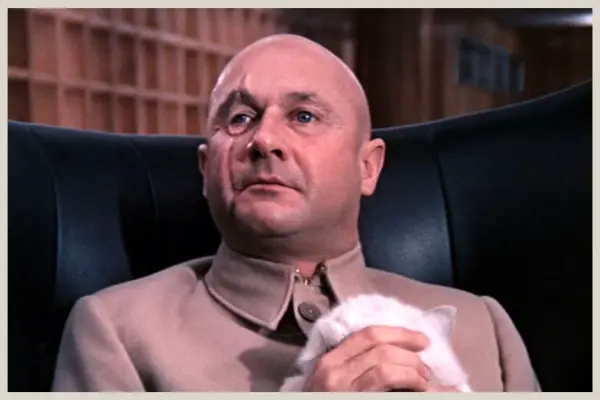
With the assistance of the Japanese secret service chief, Bond discovers SPECTRE’s secret volcano lair and thwarts their plot to hijack U.S. and Soviet spacecraft to subtly trigger World War III. Despite his defeat, Blofeld escapes death.
A New James Bond Timeline and an About Turn
Bond 6, On Her Majesty’s Secret Service is a new beginning, a new James Bond timeline. Actually, it’s unique in two respects: It’s the only film starring George Lazenby as 007 and one of the most pivotal films in the franchise.
In On Her Majesty’s Secret Service, Bond crosses paths with Teresa “Tracy” di Vincenzo, whom he saves from a suicide attempt. Tracy’s father, head of a major European crime syndicate, blesses their relationship, and Bond continues seeing Tracy in exchange for information about Blofeld.
The investigation leads Bond to the Swiss Alps, where Blofeld has set up a pseudo-clinic claiming to treat allergies. The reality is far darker: Blofeld brainwashes 12 women, turning them into biological weapons to cripple the global food supply.
Although Bond’s superior, M, capitulates to Blofeld’s demands, Bond, compelled by Tracy’s capture, attacks the facility. With the support of Tracy’s father and his allies, Bond derails Blofeld’s plan but fails to kill the SPECTRE boss.
Later, Bond and Tracy get married, but their joy is short-lived. Blofeld and his operative Irma Blunt drive past Bond and Tracy, who’ve stopped in a lay by, and randomly shoot at Bond. He survives, but Tracy is shot in the head and dies, leaving Bond with a lasting heartache.
Bond 7, Diamonds Are Forever marked and about turn for Sean Connery, who was back as James Bond for the sixth and final time. It sees Bond clash with Blofeld yet again. It’s not critiqued as one of his best movies, but Diamonds Are Forever isn’t as bad as they make out.
This time, Blofeld is the brains behind a diamond smuggling operation and the construction of a diamond-laden satellite laser with the ability to detonate nuclear weapons from space. Blofeld plans to auction the satellite to the highest bidder.
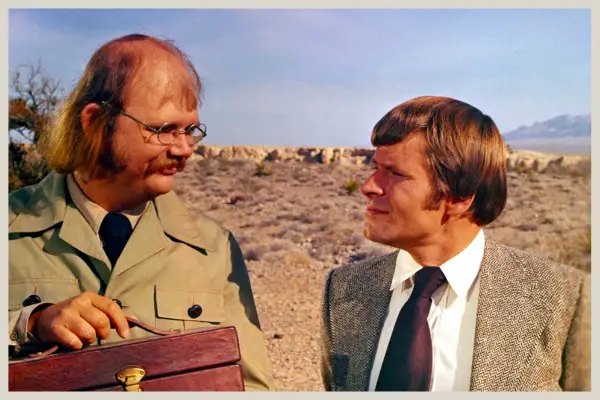
Bond is up against Blofeld’s most formidable duo Mr. Wint and Mr. Kidd, who prove to be one of the most difficult opponents Bond has ever faced. But with the help of Tiffany Case, he outmaneuvers them and Blofeld.
The Beginning of Roger Moore’s 007 Timeline
Bond 8, Live and Let Die ushers in the Roger Moore era of James Bond, eschewing major SPECTRE narratives and favoring a more standalone approach.
In this film, Bond heads to the Caribbean island of San Monique to investigate the deaths of three MI6 agents within 24 hours. He uncovers a plot by the island’s leader, Dr. Kananga, to distribute free heroin via a restaurant chain, aiming to spike drug addiction and dominate the American drug market.
Dr. Kananga uses voodoo to prevent the locals from asking too many questions and Solitaire, a tarot reading psychic, to predict the future. But once Bond manipulates Solitaire into bed, Kananga’s empire comes crumbling down.
Bond 9, sees Bond leave the Caribbean behind for Thailand and South East Asia in The Man with the Golden Gun and a shoot out between himself and the reclusive millionaire Francisco Scaramanga.
Although M calls Bond off active duty, 007 embarks on a self-imposed mission to locate Scaramanga, ultimately discovering that he’s purloined a device that could revolutionize energy production and destabilize the global economy.
The ensuing duel takes place on Scaramanga’s secluded island in the South China Sea, with Scaramanga’s henchman/butler Nick Nack overseeing proceedings, with Bond ultimately triumphing over the man with the actual golden gun.
Bond 10, The Spy Who Loved Me finds Bond investigating the mysterious disappearance of British and Soviet submarines. Forced to collaborate with Soviet super spy Anya Amasova, AKA Agent XXX, they unearth a plot by billionaire scientist Karl Stromberg to ignite a nuclear war using the submarines.
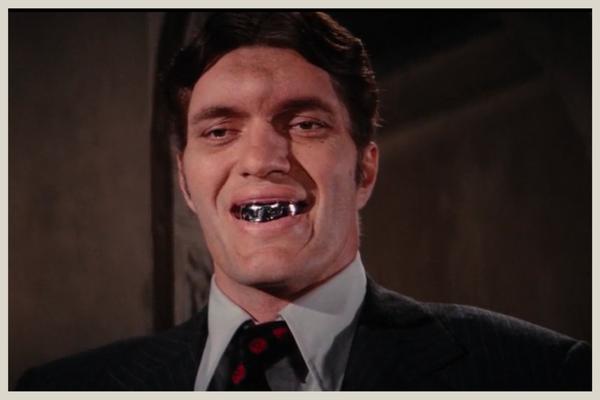
Bond and Amasova infiltrate Stromberg’s underwater fortress, where he plans to kickstart a new civilization, successfully thwarting nuclear missiles aimed at New York and Moscow. The movie also unveils one of Bond’s most unforgettable adversaries: The giant-metal-toothed assassin, Jaws.
Venturing into Space, India, The Med and San Francisco
Bond’s journey goes to all ends of the planet and even into space in his next few outings. Bond 11, Moonraker pairs Bond with CIA agent Holly Goodhead to thwart industrialist Hugo Drax‘s plan to eradicate the world’s human population using lethal nerve gas, only to establish a new “utopian” society from a concealed space station.
Jaws returns as Bond’s biggest antagonist, but the metal-toothed giant realizes his appearance doesn’t quite fit with his new boss’ image of a perfect society and so he turns on him and helps Bond beat the crazed Drax.
Bond 12, For Your Eyes Only” has Bond join forces with a revenge-seeking Melina Havelock to prevent a classified British targeting computer from falling into Soviet control. But before the action escalates, Bond settles an old score in the film’s cold open, visiting his wife’s grave and engaging a camouflaged version of Blofeld in battle, ultimately killing him. Due to legal issues, Blofeld was absent from Moore-era Bond films, and this scene served as the franchise’s humorous nod to the legal wrangling with a virtual two fingers from Eon.
Bond 13, Octopussy presents Bond with scheming Soviet generals yet again. In a surprising alliance, he collaborates with the cryptic leader of a women’s cult who also runs a circus troupe from her lair in India.
She helps him to avert a nuclear bomb plot by Kamal Khan and corrupt Soviet General Orlov who hoped it would enable Soviet dominance in Western Europe.
In Bond 14, A View to a Kill, Bond heads to San Francisco via Paris to stop the crazed business tycoon Max Zorin from flooding Silicon Valley in order to monopolize the future of microchips. Bond comes up against, then beds and then is ultimately helped by Max Zorin’s powerful bodyguard May Day, as he thwarts Zorin’s attempts.
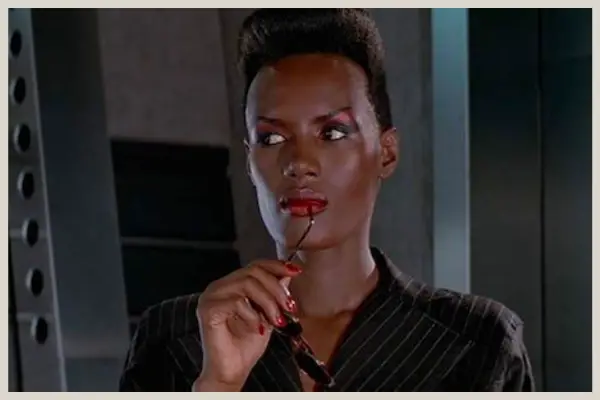
This film also saw to an end the longest reign of any Bond as Roger Moore parted ways after 12 years, and 7 Bond films
A Short Lived New Beginning
In 1987, the baton of the Bond franchise was handed to fresh-faced Timothy Dalton, leading two distinct Bond flicks to round off the 1980s. Bond 15, The Living Daylights, James Bond finds himself once more entangled in Cold War intrigues, this time involving a KGB defector soliciting Bond’s protection.
But when the defecting agent vanishes, Bond embarks on an investigation that pulls him into a twisted narrative of deception, featuring a cellist, a rogue arms dealer, and a possible ruse of a defection. Of course, Bond overcomes everything, but the film is certainly one of the best in the franchise and Timothy Dalton’s fresh take on James Bond made a major difference to the previous few films, even if he wasn’t well loved at the time.
Bond 16, Licence to Kill injects a personal touch into Bond’s professional world, pairing him again with old CIA buddy Felix Leiter. When vengeful drug cartel leader, Franz Sanchez orchestrates a hit on Leiter—badly wounding him and murdering his wife—Bond swears vengeance.
M’s attempts to curb his rage falls on deaf ears, leading to the revocation of his license to kill. Morphing into a renegade spy and aided secretly by Q, Bond ventures to Central America to exact his revenge and dismantle the drug cartel along the way. After a few legal things got in the way of Dalton’s third Bond film, this was unfortunately his last of 2 outings in the famous tuxedo.
James Bond Timeline Heads into the 1990s
Following a six-year hiatus, James Bond made a comeback with Pierce Brosnan picking up the Walther PPK. Bond 17, Goldeneye, a film that leaned heavily on the concept of Bond as a relic of a bygone era grappling with emerging threats.
Here, he confronts the aftermath of the Cold War, represented by his erstwhile partner Alec Trevelyan, MI6 Agent 006, who had feigned his death to command a criminal syndicate planning to exploit a satellite EMP device to wreak havoc on Britain’s economy.
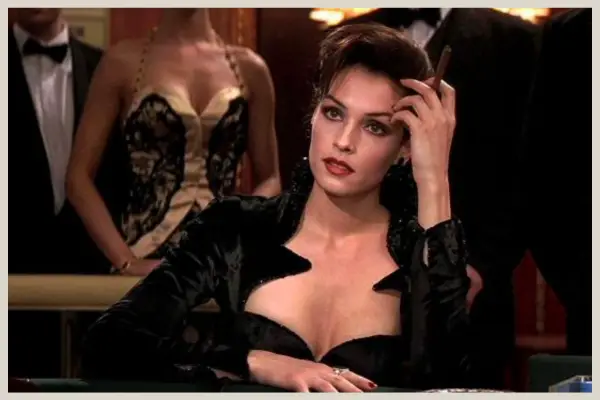
Bond teams up with Natalya Simonova, but comes up against one of the most memorable femme fatales in Xenia Onatopp. Her infamy is worldwide and she sees off her victims by asphyxiation, using her thighs. Bond overcomes her and his old partner to stop the latest threat.
Bond18, Tomorrow Never Dies Bond wrestles with the machinations of media, as he squares off against media tycoon Elliott Carver and his devious plan to ignite a counterfeit war between Britain and China, concocting the news with a stealth ship and ingenious tech at his disposal. He’s helped by Chinese Agent Wai Lin, and Carver’s wife Paris Carver, as they stop the media mogul from ever writing tomorrow’s headlines again.
Bond 19, The World is Not Enough finds Bond dealing with the Cold War’s legacy again, locking horns with a former KGB agent and an oil heiress—once a friend—as they scheme to pilfer Soviet plutonium to fabricate a bomb to boost their own oil stakes.
Elektra King is the first ever female main villain, and her seductive ways make her one of the most intriguing villains. The film is probably most memorable for it being Q actor, Desmond Llewelyn‘s last outing as the head of Q Branch after 25 years.
Bond 20 is Brosnan’s final Bond outing. Die Another Day sees Bond’s roster of contemporary threats expand to include North Korea. Here, he contends with a Korean colonel masquerading as a British billionaire after undegoing gene therapy treatment.
He intends to obliterate the demilitarized zone between North and South Korea, thus reigniting the Korean War, and with the help of Double Agent Miranda Frost, they form a formidable force, but Brosnan sees out his era by killing off this Marvel type Bond villain.
A Complete Reboot to Begin a New Timeline
With Daniel Craig next to don the famous tuxedo, Eon Productions elected to hit the reset button, entirely rebooting the James Bond timeline.
Despite Judi Dench holding her ground in this era of the series as M, she remained the sole survivor from the Brosnan years. The rest of Bond’s accomplices were re-cast, and Bond himself was portrayed as a considerably younger agent, with the introductory sequence of Casino Royale chronicling his becoming a 00-Agent.
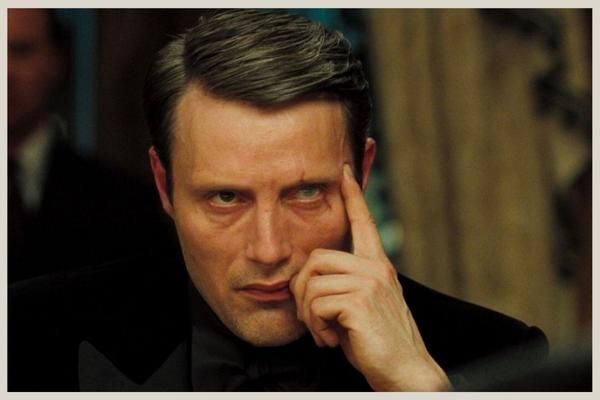
The lion’s share of Bond 21 orbits around Bond probing the financing of terrorism via the perilous banker known as Le Chiffre, partnering with British Treasury agent Vesper Lynd. Bond secures a pivotal win in a high-risk poker game, but Le Chiffre retaliates by abducting him and Vesper.
An enigmatic figure named Mr. White kills Le Chiffre, but for some reason allows Bond and Vesper to live, only for the truth to come out when they later head to Venice and it becomes clear that Vesper did a deal with White to allow Bond to live. A heartbreaking for Bond, however, as she takes her own life.
Bond 22, Quantum of Solace is a direct follow on from Casino Royale, and this episode sees Bond locked in battle with the clandestine group, Quantum, as their man Dominic Greene aims to corner the Bolivian water supply market.
Bond teams up with Camille Montes, who’s on a personal mission to avenge the death of her family at the hands of corrupt General Medrano. It’s all tied together, and Bond and Montes win in an explosive ending.
Bond 23, Skyfall brings a deeply personal quest into focus, as Bond rejoins MI6 after self-imposed exile following an unknown assailant’s attack on MI6 headquarters in London. Collaborating with M, who’s feeling the heat from her superiors to hang up her boots, Bond uncovers that the puppet master is ex-MI6 agent Raoul Silva.
Silva was M’s agent in the pre-Bond era until she disowned him, leaving him to Chinese agents’ mercy, resulting in his disfigurement and fuelling his quest for vengeance. He delivers arguably the best Bond villain performance of the entire catalog in his personal mission to kill M.
It all comes down to a major shootout at Bond’s ancestral home in Scotland, Skyfall Lodge. Here, they ready themselves for an onslaught with the aid of the property’s caretaker. Although they fend off Silva’s men and ultimately kill Silva, M later succumbs to her injuries, leaving Bond to grieve the passing of another significant woman in his life.
SPECTRE and Blofeld Are Back!
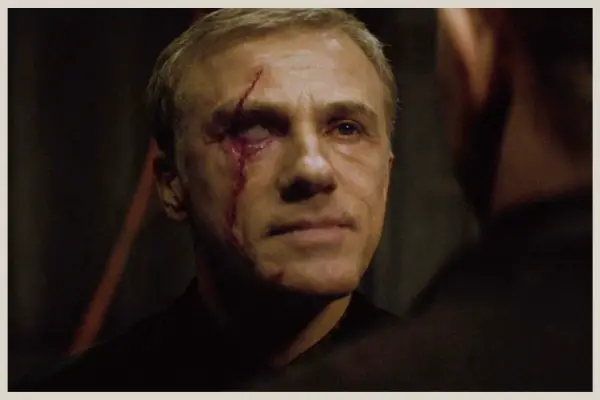
Bond 24, After four decades, Spectre sees the reintroduction of the criminal organization SPECTRE. It was all down to legal ownership of the branding, but once MGM and Danjaq (Eon) secured rights to use the entire Fleming catalog once again.
The film sees an attempt by MI5 operative Max Denbigh to end the 00 program. He’s under the payroll of Ernst Stavro Blofeld and SPECTRE, and Bond teams up with Mr. White’s daughter, Dr. Madeleine Swann to try and overcome this latest mission.
Blofeld reveals a shared childhood with Bond, after he was temporarily fostered by Blofeld’s father when his parents passed away. Blofeld, known as Franz Oberhauser back then, was jealous of his father showing Bond so much attention and so he killed him before changing his identity.
Revenge against Bond became Blofeld’s lifetime raison d’etre and this deeply personal feud, which was decades in the making, concluded with Bond capturing but sparing Blofeld’s life, hinting at his possible return in future sequels.
Bond 25, No Time To Die is a sequel to Spectre and it starts with Blofeld behind bars and Madeleine Swann by his side. She encourages Bond to make amends with Vesper Lynd, so he goes to pay his respects at Vesper’s grave in Italy, only to be attacked by SPECTRE operatives.
Bond instantly blamed Madeleine, so he put her on a train, ready to sever ties permanently, and retire from MI6. Having hung up his boots, he sought solitude in Jamaica, ready to live out his days in peace. But as always with James Bond, the past was not done with him.
He coaxed out of retirement by old friend Felix Leiter to help overcome terrorist Lyutsifer Safin, who has his hands on Heracles, an MI6-endorsed nanobot weapon that’s programmed to kill any individual matching the DNA fed into its targeting system.
It’s a game of cat and mouse as the nanobot takes out Blofeld, before Bond kills Safin, but ultimately is infected by the nanobot, which will kill Madeleine if he touches her and so he chooses to stay on Safin’s lair as it goes up in flames, ultimately ending his life. But not before he finds out, he’s the father to Madeleine’s young daughter, Mathilde.
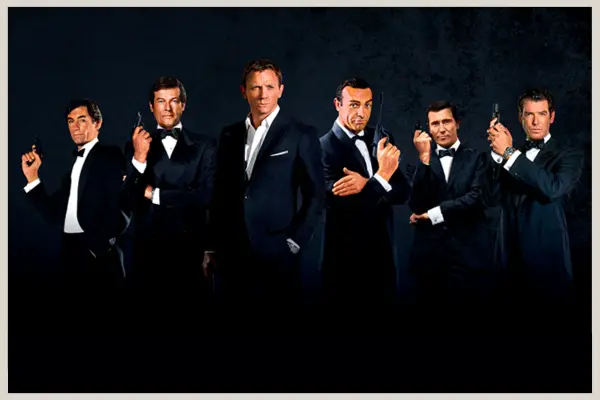
James Bond Movie Timeline
And there you have it – a comprehensive trek through the decades of daring exploits, deadly foes, and world-shaking plots that comprise the James Bond timeline.
From the debonair charm of Sean Connery to the steely grit of Daniel Craig, each iteration of 007 has left an indelible mark on the cultural zeitgeist.
As we close this chapter and anticipate what the future holds for this iconic character, one thing is certain: James Bond will continue to redefine what it means to be the world’s greatest secret agent, always promising thrilling adventures that will leave us on the edge of our seats.
And what the new James Bond brings will likely be a blend of all past iterations of the world’s favorite secret agent.




